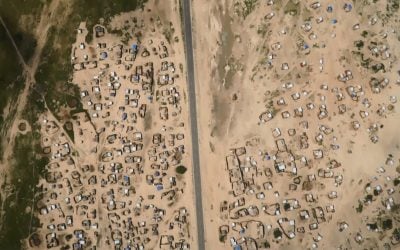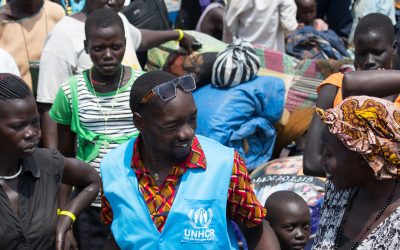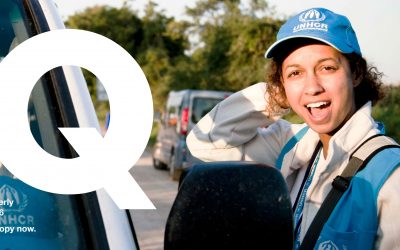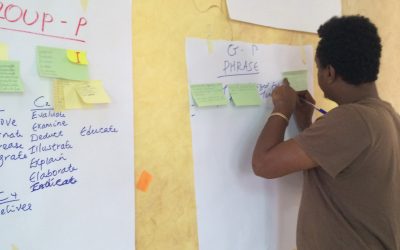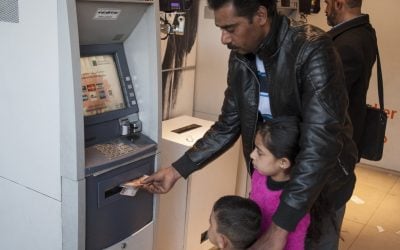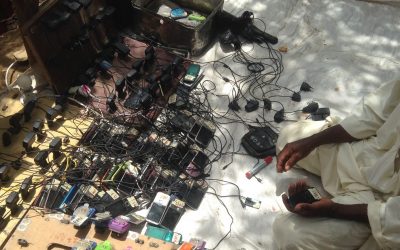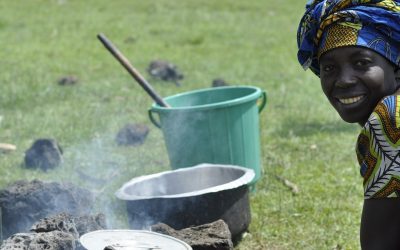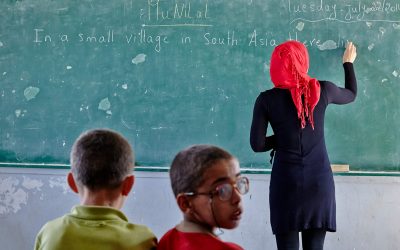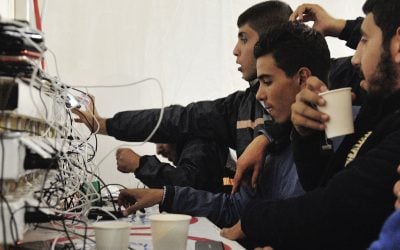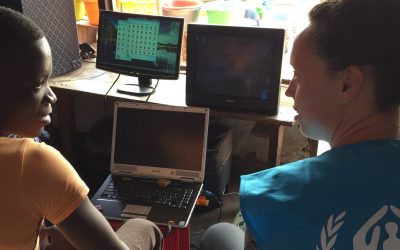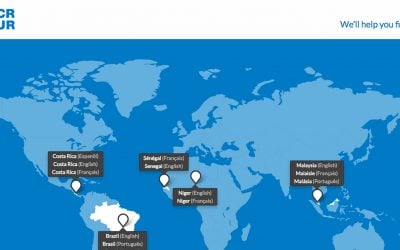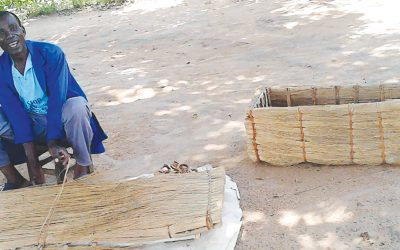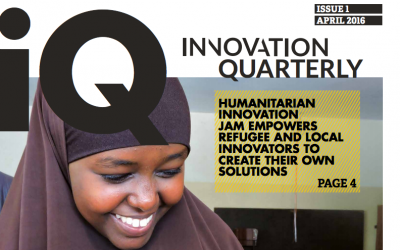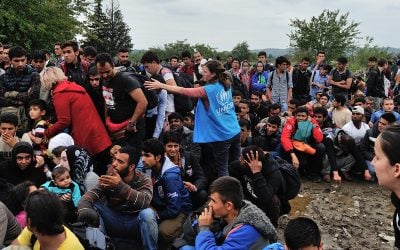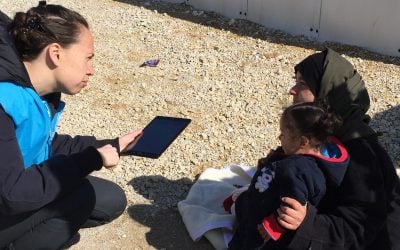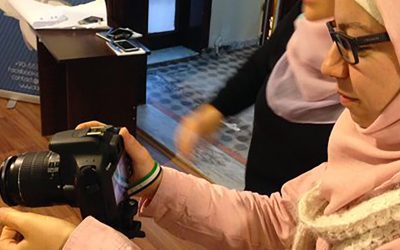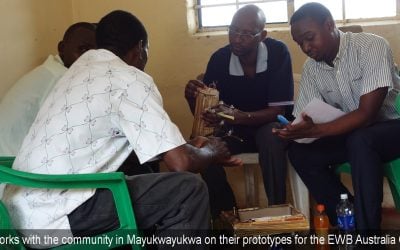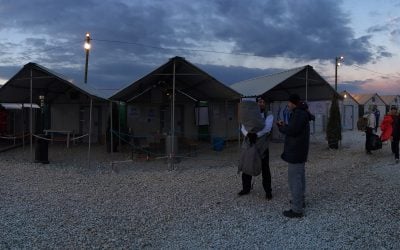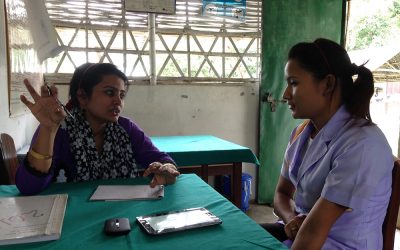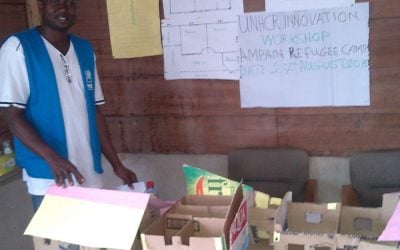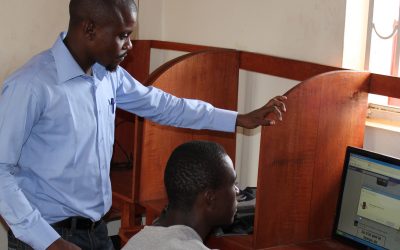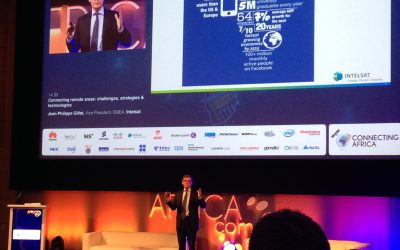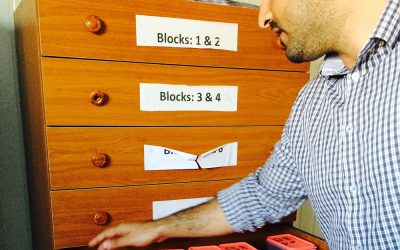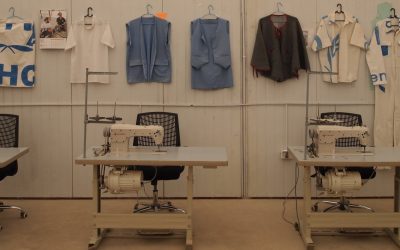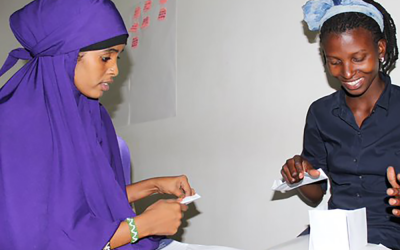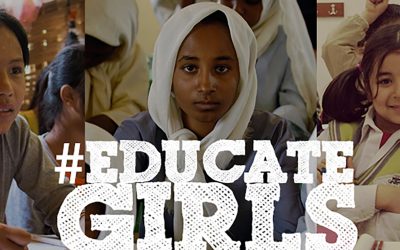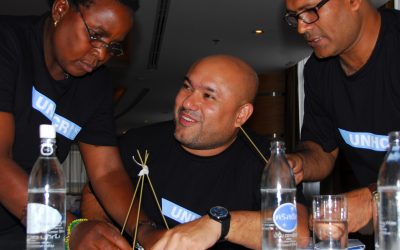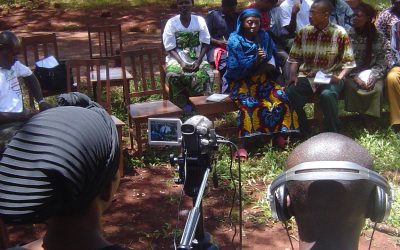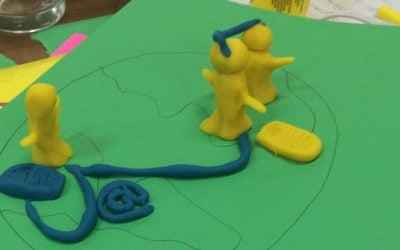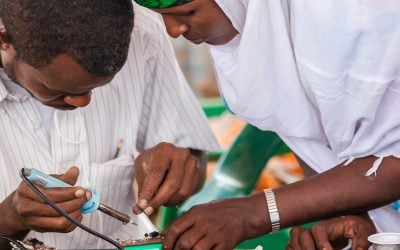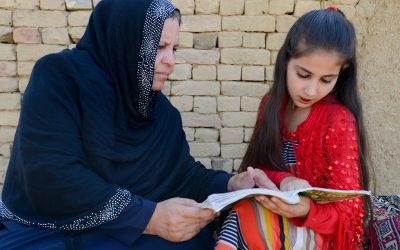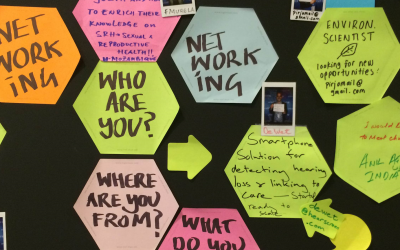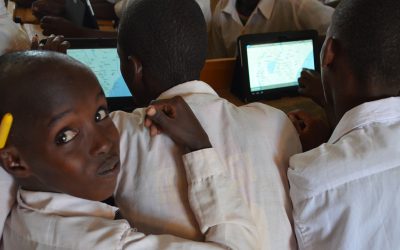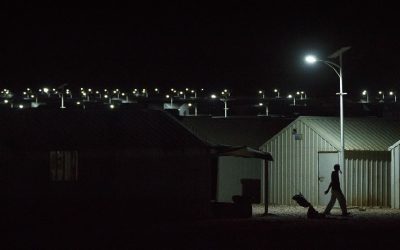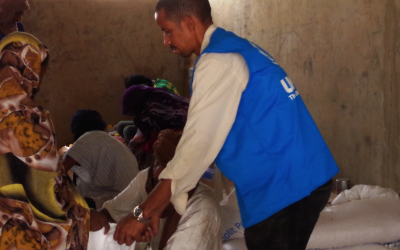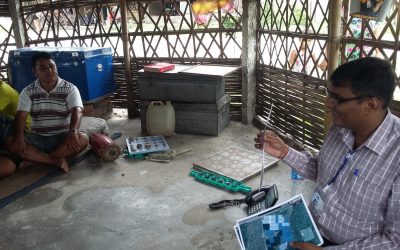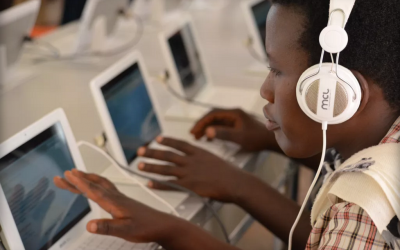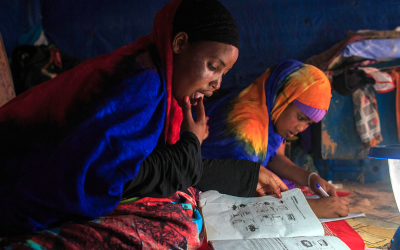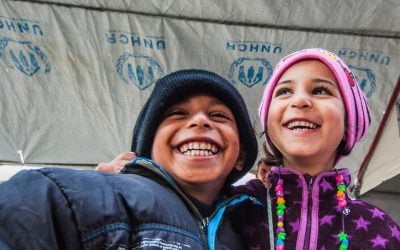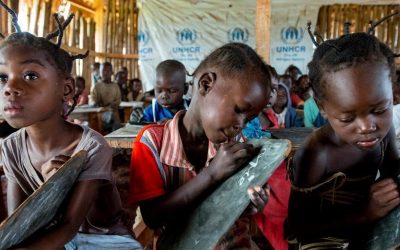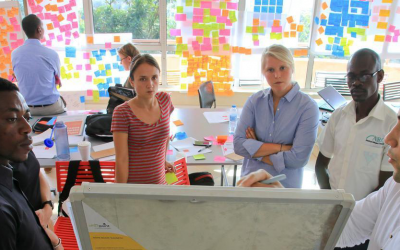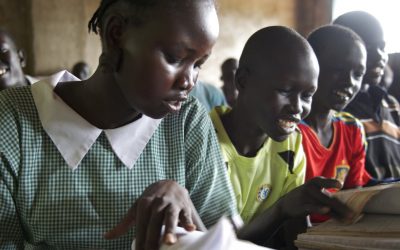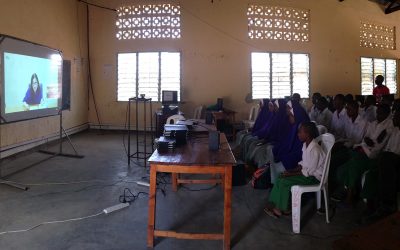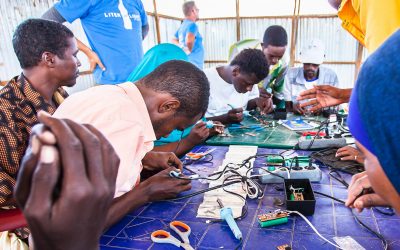The Library
Taking to the skies: displacement, drones, and maps
Following massive population displacements from Nigeria and within Niger in 2015 and 2016 the UNHCR operation and partners in Niger were faced with a significant mapping challenge. At the end of July 2016, there were reportedly up to 300,000 people displaced within...
The secret to innovation? Lifelong learning
As major emergencies and crises continue to proliferate and change the humanitarian field, UNHCR keeps evolving and adapting. But since any organization is comprised of its people, it is they who must be flexible and open-minded, versatile and creative. In this...
New publication: Innovation Quarterly | Issue 2
Download the second issue of Innovation Quarterly to read about how UNHCR is incorporating innovation into its response strategy, and other great stories about humanitarian innovation.
Facilitating innovation at the Assosa sub-country office
As an Assistant Water, Sanitation and Hygiene (WASH) Officer, I am constantly reminded of the unmet needs of the refugee population. I work in UNHCR’s Assosa sub-country office in Ethiopia, where I’m responsible for developing strategies for water systems, waste...
Using biometrics to bring assistance to refugees in Jordan
Every month, 23,000 Syrian refugee families living in Jordan look forward to receiving the same text message. It’s a simple message, no more than a few words, but it’s what alerts them to their monthly financial assistance reaching their bank accounts. Since June...
Diffa, Niger: An ‘unexpectedly’, diverse communications eco-system
“Never assume you know the communications eco-system – never think you know how people share information and which sources they trust better than community members themselves”. These were the words I found myself repeating in South Sudan, whilst supporting the recent...
SAFE from the start: Fighting sexual and gender-based violence through bottom-up innovation
Sexual and gender-based violence (SGBV), one of the most terrible consequences of conflict, is also one that often goes underreported – and therefore unaddressed – because of cultural taboos that silence its victims. Now, UNHCR is fighting the issue upfront with a...
5 challenges to accessing education for Syrian refugee children
Lessons learned from the Refugee Education Workshop at Stanford University. More than half of the 4.8 million refugees who have poured out of Syria are children. The world sees their faces as they cling to parents, bob in overburdened boats, cry in the arms of...
10 defining principles of radical openness
At the World Humanitarian Summit in May, Google, Mercy Corps, UNHCR Innovation and ThoughtWorks were lucky enough to win an award for having one of the Top 5 Innovations of the World Humanitarian Summit for our collaborative project Translation Cards. While...
Whose innovation is it anyway?
Technical Top Trumps Having never worked with an innovation unit -let alone been in an innovation ‘Lab’ before-it’s fair to say I had an ‘innovation complex’ when starting as the Emergency Lab Manager. For many, innovation is synonymous with the use of technology....
Help.unhcr.org: a platform for asylum seekers to access information
Urban refugees sometimes have a wealth of assistance at their fingertips, and yet no comprehensive, up-to-date and accurate online resource to help them access it. UNHCR Innovation tackled this issue with a challenge through UNHCR Ideas and came up with a winner: a...
10 refugees who will change your perception of entrepreneurship
Despite significant hardships, refugees are pushing the limits of what most people recognize as the general entrepreneur spirit. There is a resilience among refugee communities that enables them to thrive, not just to survive, and to be creative members of society....
How human-centered design can help create self-sustainable refugee communities
If war had not come to Johnny D.’s Angolan village, maybe he would still be selling books with his wife and ten children. But war did come, in 2006, and there was no time to grab any possessions. They just ran. Johnny says had he stayed, he would be dead. Armed men...
New publication: Innovation Quarterly | Issue 1 – April 2016
Download the first issue of Innovation Quarterly to read about how UNHCR is incorporating innovation into its response and other great stories about humanitarian innovation.
Update: 10 CwC challenges in the new face of the European Refugee crisis
Using CwC as a tool when fast-paced transit turns to frustration and uncertainty In January 2016, the Emergency Lab posted a blog about the different challenges humanitarian responders faced when trying to communicate with refugees and migrants making their way...
Making sure refugees aren’t lost in translation – with one simple app
The Emergency Lab’s First Words: Translation Cards During our first scoping mission to fYR Macedonia late last year, the Emergency Lab identified the complexity of working in multiple languages as a key challenge. Ensuring that we share accurate information with...
Defying gravity: supporting Syria’s youth by disrupting systems of education and development
We sat on a bench under the sun conversing amidst sounds of young boys playing soccer and kids running to their next classes. This is seemingly a normal interaction that could be anywhere, like Central Park in New York for instance. But this was not a normal setting...
Chasing opportunity: how new approaches can pave the way for refugee self-reliance
Timothy Sakala saw a problem, and he saw a solution. It was the middle he wasn’t so sure about. As a fairly new Livelihoods Officer with UNHCR’s Zambia operation, Timothy had noticed during the previous 18 months that refugees were having major difficulties finding...
Innovating around Emergencies: How we got started
What is the Emergency Lab? Some of the greatest opportunities can also be quite daunting, can’t they? This is certainly the feeling I had when I realised that I was to be part of a new Emergency Lab that was being set up inside UNHCR. The Innovation Unit, along with...
Using telecommunications to improve clinical healthcare in refugee camps
As a Health Associate working in Damak, Nepal, Salina Khatoon and her team were facing a situation all too familiar to many UNHCR employees. Health services in the country’s two camps for refugees from Bhutan were about to go through a major transition, but the team...
Empowering refugees to create their own housing solutions
Yusif Sidik’s vision of an efficient shelter program involves no sophisticated design, innovative material, or complex logistics. It’s about putting refugees in charge of the process, using locally-sourced materials. Sidik is a Senior Field Assistant in Ghana, working...
Creating an innovation ecosystem in Uganda for refugees
Want to learn more about bottom-up innovation? Take a look at the Humanitarian Innovation Jam 2016 on Bottom-up Innovation. Local Challenges. Local Solutions. Innovation in Africa is increasingly in the international limelight. The iHub in Kenya is a technology hub...
Catch of the day: on the search for big data to help measure displacement
The long, winding road of our Innovation Fellowship led us to Cape Town and the AfricaCom conference, the largest meeting of telecom operators in Africa. After many hours of brainstorming, funneling ideas, researching, reaching out to experts, and prototyping, our...
Using GIS technology to map shelter allocation in Azraq refugee camp
Yahya Hassune, doesn’t take no for an answer, quite fortunately for UNHCR. About two years ago, Hassune was working on his first day as Associate Field Officer in Azraq, a new camp located in central-eastern Jordan that currently hosts about 26,000 Syrian refugees...
5 ways to better engage with bottom-up innovations by refugees
Want to learn more about bottom-up innovation? Take a look at the Humanitarian Innovation Jam 2016 on Bottom-up Innovation. Local Challenges. Local Solutions. Innovation from the perspective of refugees is too often missing in research and practice for refugee...
Building the creative confidence of young refugees
Months into her first placement with UNHCR in Uganda, Keiko Odashiro was hit by a crisis of conscience. After years spent at the helm of her own organization – an NGO working around human trafficking and gender-based violence – she had made the switch to the U.N....
#EducateGirls in Zaatari; updates from the Challenge winner
In late 2014 UNHCR Innovation launched its fifth UNHCR Ideas challenge which asked: “How can we support communities and educators to overcome the challenges faced by adolescent girls in accessing education?” What is UNHCR Ideas? It is a space for humanitarians,...
The European Refugee crisis: 10 Communications with Communities challenges
The challenge is obscured by ‘complexity’ “It’s like no other emergency” or “there are huge challenges, like nowhere I’ve ever worked” are common phrases I’ve found myself saying post deployment to almost every humanitarian operation I’ve worked in. I’m definitely not...
“Event Horizons”: seeing beyond the black hole of training & capacity-building events
UNHCR’s Energy Lab – a collaboration between UNHCR’s Energy & Environment and Innovation units recently ran a Swiss Development Cooperation (SDC) funded, scenario-based training event. The training started off as a workshop, like so many others run the year...
Why we need to stop turning refugee stories into aid agency vanity projects and start listening
Less than a month ago I attended the World Humanitarian Summit Global Consultation in Geneva. Beyond all the long panel discussions, and intense networking among the relatively exclusive crowd, I found myself in an Innovation Marketplace. While my stand (with my...
11 New Year’s resolutions for humanitarian innovation
2015 was a hard year to digest. Now every 1 in 122 humans is either a refugee, internally displaced, or seeking asylum. But a new year represents the opportunity to set goals and visions of what we hope 2016 will bring. And while New Year’s resolutions are often easy...
How the SDGs change the role of humanitarian innovation
In the fanfare surrounding the release of the Sustainable Development Goals it may be easy to miss a shift in thinking that can have a dramatic impact on the role of Humanitarian innovators. Our job as advocates and practitioners of innovation is about to get much...
Testing Ascend in Costa Rica: refining the solution
Project Background The majority of refugees and asylum seekers in Costa Rica live in urban settings. Because urban refugees are dispersed and mobile (compared to refugees who live in camps or settlements), communicating with them can be challenging for organizations...
What is prototyping anyway?
Let’s start with what it isn’t. A pilot. Pilots have historically been the default method used in the humanitarian sector when moving towards new approaches to solving problems. A pilot is, by definition, a solution that is to be tested on a small scale that is seen...
7 essential resources for a design thinker
I’m not the average person who would be interested in purchasing the newest edition of the Harvard Business Review but walking around the airport in September, the newest addition caught my eye. The title of the September 2015 issue was The Evolution of Design...
No ‘quick fixes’ for refugee education: WISE words from Nansen Refugee Award winner
Aqeela Asifi, the 2015 UNHCR Nansen Refugee Award winner, was recognized for her courageous work and significant contribution to refugee girls’ education. She received a special invitation to attend the 2015 WISE Summit (World Innovation Summit for Education), which...
How to effectively convene humanitarian innovators
UNHCR Innovation had the pleasure of attending the Global Innovations for Children and Youth Summit - ‘Start-Up to Scale-Up; hosted by UNICEF and Finland’s Ministry for Foreign Affairs last week. This wonderful event brought together 400 of UNICEF’s friends, and what...
7 challenges. 439 ideas. 3 updates from our crowdsourcing platform.
Have you ever heard of the concept "the wisdom of the crowd"? It's the idea that the collective opinion of a group of individuals is better than the opinion of one. Unfortunately, the decisions or ideas of one often shape business, societies, and nations in the world...
5 lessons learned from rolling out joint innovative energy projects
This is an excerpt from UNHCR’s recently released report: Innovation at UNHCR 2014. This report highlights and showcases some of the innovative approaches the organization is taking to address complex refugee challenges. Through the Energy Lab, UNHCR Innovation and...
5 information challenges for refugees in Costa Rica
When some people hear the word ‘refugee’, the first images that may come to mind are of boats in the Mediterranean; a tent with the UNHCR logo in a dusty site; or people stranded at the border in the harsh winter, eager to cross to the other side. And, while these...
How to turn setbacks into progress for innovation projects
There are many ways to arrange the proverbial “last mile” before relief reaches people. Since 2014, UNHCR has been testing software created together with the UPS Foundation to speed up the distribution of goods and services to refugees, and to link distribution data...
Connecting elderly refugees through ICT
During the 1990s, about 108,000 refugees fled ethnic tensions in Bhutan and stayed in the refugee camps in eastern Nepal. For more than two decades they lived in seven camps managed by UNHCR until the third country resettlement program was initiated in 2007. This...
Tablets for Education
Ioannis Papachristodoulou is enthusiastically bracing for failure. The UNHCR Innovation Fellow is currently testing his prototype for a tablet-based project that facilitates language learning for refugees. He knows the results may not be satisfying. “If there’s one...
How to set up and transition an innovation lab: lessons learned
This is an excerpt from UNHCR’s recently released report: Innovation at UNHCR 2014. This report highlights and showcases some of the innovative approaches the organization is taking to address complex refugee challenges. Conversations on the need for Labs often begin...
What happens to the 97% of refugees who don’t make it out?
About 40 years ago, my parents and their relatives were stuck in refugee camps after they were forced to flee their homes in Vietnam. They faced a dangerous and uncertain future, running from one camp to another, not knowing where life would take them next. And yet,...
How do you measure innovation in refugee education initiatives?
This is an excerpt from UNHCR’s recently released report: Innovation at UNHCR 2014. This report highlights and showcases some of the innovative approaches the organization is taking to address complex refugee challenges. For the Learn Lab's second year, progress was...
Prototyping education innovations: Amplify bootcamp
It is the third day of the Refugee Education Challenge Bootcamp here on the fourth floor of a Kampala office block, and the usually magnificent view of the city’s hills is obscured by Post-It notes stuck to the windows scrawled with yesterday’s exercises. Large...
5 lessons learned from rolling out joint innovative education initiatives
This is an excerpt from UNHCR’s recently released report: Innovation at UNHCR 2014. This report highlights and showcases some of the innovative approaches the organization is taking to address complex refugee challenges. Through the Learn Lab, UNHCR Innovation and the...
How the world’s top executives are preparing students in Dadaab for leadership
With five camps spread across 41 square kilometers, Dadaab is home to more than 350,000 people. 60% of the Camp population are under 18 years old, and the majority of these children will have been born in Dadaab. Whilst UNHCR and their partners run a number of formal...
1 prototype; 4 critical questions.
This is an excerpt from UNHCR’s recently released report: Innovation at UNHCR 2014. This report highlights and showcases some of the innovative approaches the organization is taking to address complex refugee challenges. Much of the Energy Lab's work in 2014 focused...

